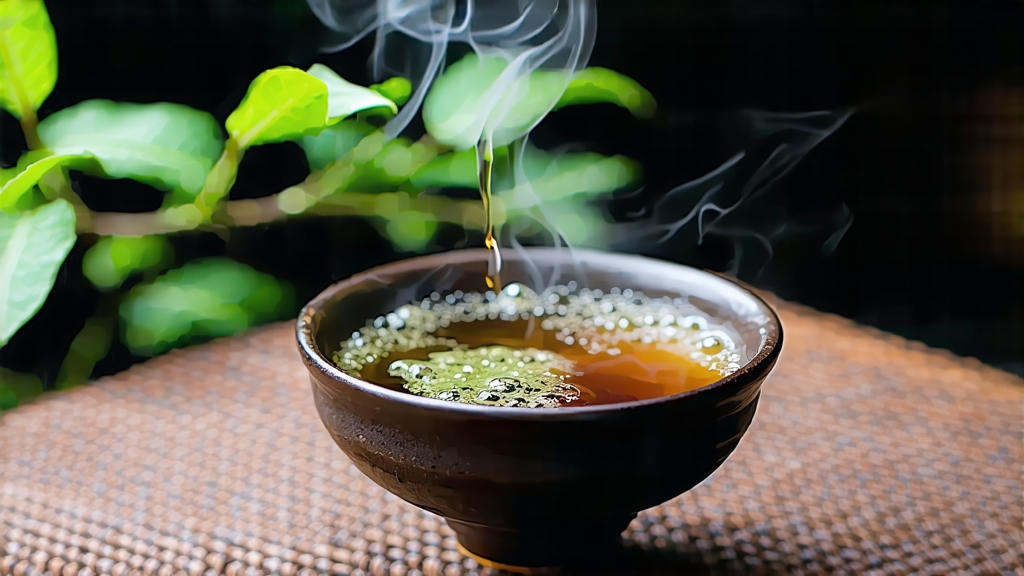
Walk into any serious tea house from Taipei to Toronto and you will sooner or later meet a quiet, jade-green coil of leaves that unfurls in hot water like a waking dragon. That coil is Tie Guan Yin, “Iron Goddess of Mercy,” the most celebrated style of Chinese oolong and, for many drinkers, the gateway into the half-fermented universe that lies between green freshness and black depth. Born in the granite heart of Anxi county, southern Fujian, Tie Guan Yin is at once a cultivar, a craft, and a 300-year-old legend that still shapes the economy, poetry, and daily rhythm of an entire region.
Legend first. Local monks say that in 1736 a poor farmer named Wei Yin walked past a ruined temple dedicated to Guan Yin, the Bodhisattva of Compassion. Moved by the shrine’s neglect, he swept the courtyard and burned incense daily for weeks. One night in a dream the goddess led him to a hidden cave where a single tea plant glimmered like jade. Wei planted the cutting in his field, processed the leaves with meticulous reverence, and found the liquor so fragrant that it revived both body and spirit. He named the tea after the iron statue of the goddess that had inspired him, and the county’s fate was sealed. Historians add that the Qing court soon granted Anxi “tribute tea” status, sending compressed bricks of Tie Guan Yin northward to the Forbidden City along the same mountain trails that now echo with tourist buses.
Botanically, Tie Guan Yin is a single, rather temperamental cultivar—Camellia sinensis var. sinensis ‘Tie Guan Yin’—that demands acidic granite soils, morning fog, and a 600–1,000 m elevation. Anxi’s microclimate delivers all three: the Wuyi mountain spur pushes cool air upward while the Xijiang River traps humid clouds between knife-sharp ridges. The plant’s leaves are noticeably thicker than those of neighboring cultivars, storing aromatic precursors that survive the violent shaking and bruising to come.
Craft is where science meets devotion. Picking begins at dawn on the 40th day after the Qingming festival, when two leaves and a bud are still dewy but the sun has not yet softened the cell walls. The harvest must reach the village workshop within two hours; any delay oxidizes the leaf edges unevenly, ruining the signature “green heart with red edge.” Inside, the leaves are spread on bamboo trays and withered under infrared lamps that mimic the now-rare winter sun. Every 20 minutes the master “shakes” the trays—an act that looks gentle but actually fractures cell membranes, allowing enzymes to meet oxygen in controlled micro-fermentation. After four rounds of shaking the leaf aroma shifts from cut grass to ripe peach, the signal to arrest oxidation with a 280 °C tumble in a cast-iron wok. Here the tea maker’s bare hands judge moisture by ear: when the sizzle turns from sharp to mellow, the kill-green is complete. Next comes rolling, first by machine to break fibers, then by foot inside a square of cotton cloth, twisting the leaves into the tight “dragonfly head” shape that protects aromatic oils during the final 24-hour charcoal bake.
That bake is Tie Guan Yin’s soul. Traditionally the leaves rest in paper-lined bamboo baskets above a pit of glowing lychee charcoal whose temperature drops one degree per hour, from 70 °C to 40 °C, across three consecutive nights. The slow heat converts remaining amino acids into pyrazines, gifting the tea its roasted walnut note while caramelizing sugars for a lingering honey finish. Modern “green” or “light” styles skip the charcoal, opting instead for a 60 °C electric oven for just two hours, preserving orchid aromatics but sacrificing the mineral depth that old drinkers call yan yun—“rock rhyme.” Between these poles lies a spectrum: moderate roast (qing xiang), heavy roast (nong xiang), and the rare “aged” Tie Guan Yin that returns to the charcoal every five years, developing dark-chocolate and dried-longan complexity that can survive decades.
To taste the difference, brew side by side. For the green style, use a 120 ml gaiwan, 5 g of leaf, and 95 °C water. Flash-rinse, then steep 15 seconds, adding five seconds each infusion. The first cup opens with a laser-sharp garden